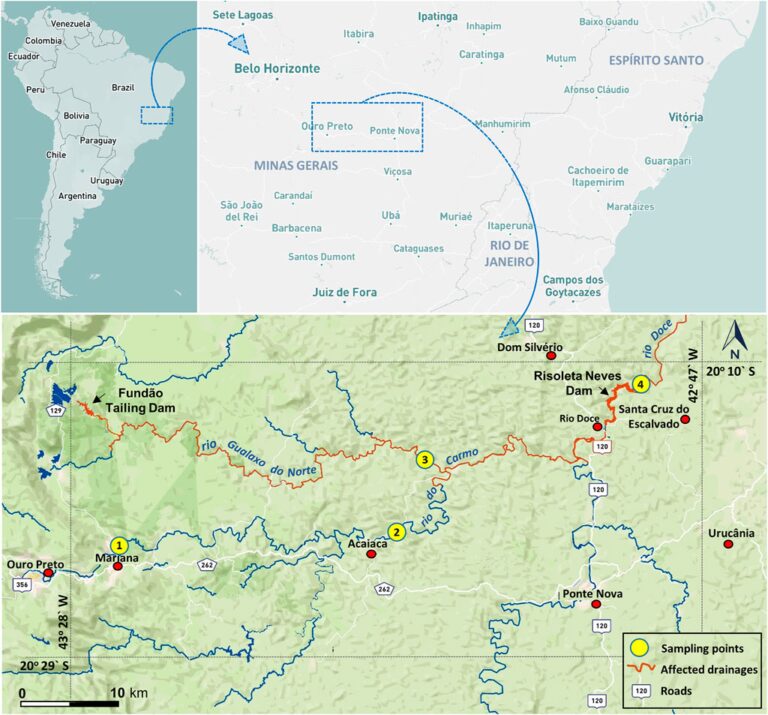The article discusses the environmental tragedy caused by the collapse of the Fundão dam in Mariana, Brazil, on November 5, 2015, which discharged around 50 million m³ of mining waste into the Doce River. This catastrophe severely impacted approximately 663.2 km of the river, affecting ecosystems, protected areas, and water quality, with monitoring efforts focusing primarily on metal concentrations. However, there has been a lack of research assessing organic contamination, particularly from emerging pollutants such as pharmaceuticals and pesticides, which pose significant risks to aquatic life and can contribute to antibiotic resistance.
The study investigates pharmaceutical (e.g., antibiotics, antidepressants) and herbicide contamination, including glyphosate and its metabolite AMPA. Sampling took place at four locations in the Doce River watershed from 2018 to 2019. Results showed a high detection rate of pharmaceuticals, with ciprofloxacin and sulfamethoxazole being particularly abundant, often exceeding predicted no effect concentrations (PNEC) and suggesting harmful ecological risks. Glyphosate and AMPA also revealed concerning levels, surpassing those of pharmaceuticals.
Overall, the findings emphasize the urgent need for comprehensive monitoring and management of emerging contaminants in water bodies, especially considering human dependency on these waters for drinking and agriculture. The article underscores that pollutants, not just metals traditionally monitored, threaten environmental and public health, necessitating proactive contamination control measures.


